1 of 10
Download to read offline
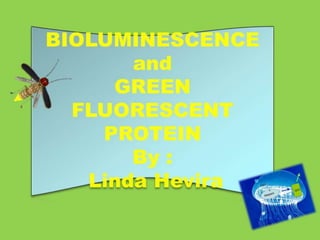

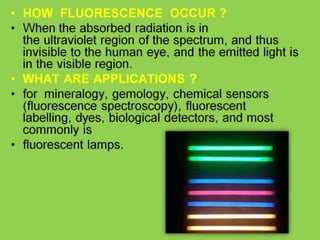


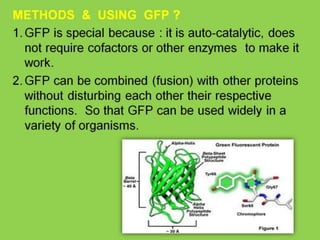
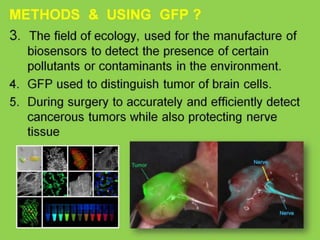
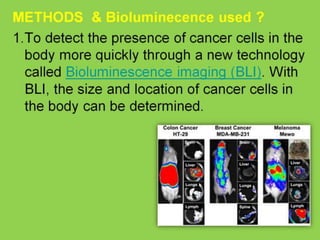
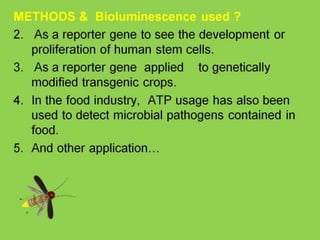
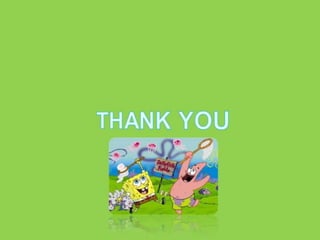
Ad
Recommended
Pengolahan dan daur ulang limbah industri kulit
Pengolahan dan daur ulang limbah industri kulit Linda Hevira
╠²
Industri penyamakan kulit mengolah kulit hewan mati menjadi produk bernilai tinggi seperti pakaian dan aksesori, dengan dampak limbah yang signifikan terhadap lingkungan. Pentingnya pengendalian pencemaran dan penetapan baku mutu lingkungan untuk mencegah kerusakan ekosistem diidentifikasi dalam proses tersebut. Limbah dari industri ini, termasuk krom, dapat berpotensi berbahaya dan membutuhkan metode daur ulang yang tepat untuk pengelolaannya.Kimia terapan telor asin
Kimia terapan telor asinAbyan Juang
╠²
Presentasi ini membahas cara membuat telur asin dengan langkah-langkah seperti mengamplas telur, mencampurkan garam dan abu gosok ke dalam air lalu membungkus telur dengan adonan tersebut dan menyimpannya selama 10 hari. Telur asin mengandung zat gizi yang dibutuhkan tubuh seperti protein, lemak, vitamin, dan mineral. Ciri telur asin yang baik adalah kulit luar yang bersih, putih telur yang bersihPengelolaan Limbah
Pengelolaan LimbahChristian indrajaya, ST, MT
╠²
Teks tersebut membahas tentang pengelolaan limbah, termasuk limbah padat, cair, dan gas. Metode pengelolaan limbah padat yang dijelaskan adalah pembuangan, daur ulang, insinerasi, dan pembuatan kompos. Metode pengelolaan limbah cair meliputi pengolahan primer, sekunder, tersier, desinfeksi, dan pengolahan lumpur. Sedangkan pengelolaan limbah gas mencakup pengendalian emisi gas buang dan penghilangan partikel dari udPengelolaan Limbah Industri
Pengelolaan Limbah Industriguest150909
╠²
Dokumen ini membahas pentingnya pengelolaan lingkungan hidup di tengah pertumbuhan industri dan potensi pencemaran yang ditimbulkannya. Kebijakan pemerintah melalui peraturan pengelolaan kualitas air dan pengendalian pencemaran ditujukan untuk mengawasi dan mempertahankan kualitas lingkungan. Pengawalan dan penegakan hukum yang konsisten diperlukan untuk memastikan kepatuhan dan keberlanjutan dalam pengelolaan lingkungan.PTPS : SISTEM PENGOLAHAN LIMBAH MEDIS
PTPS : SISTEM PENGOLAHAN LIMBAH MEDISJUHERAH
╠²
Dokumen ini membahas penggolongan limbah medis berdasarkan potensi bahaya, meliputi limbah benda tajam, infeksius, patologi, citotoksik, farmasi, kimia, dan radioaktif. Penanganan limbah infeksius terutama memfokuskan pada risiko penularan agen infeksius selama proses pengumpulan dan pembuangan. Penyimpanan limbah medis memerlukan perhatian khusus untuk mencegah kontaminasi dan akses yang tidak sah, dengan berbagai metode pengolahan seperti autoclaving dan insinerasi.Sampah medis
Sampah medissanggede
╠²
This document discusses infectious medical waste and its proper handling and disposal. It defines infectious medical waste and lists the various types. Key points made include:
- Universal precautions should be used to prevent disease transmission from bloodborne pathogens.
- Infectious waste must be collected in color coded bags at the point of generation and properly labeled. Sharps require puncture-resistant containers.
- Liquid infectious waste can be disposed of by adding to biohazardous waste, pouring down a sanitary sewer, or solidifying before disposal.
- Waste must be properly packaged, stored on site for less than 30 days, manifested and shipped off site for destruction to prevent over classification and improper disposal.PENANGANAN LIMBAH INDUSTRI
PENANGANAN LIMBAH INDUSTRIWulan Marayani
╠²
Dokumen ini membahas instalasi penanganan limbah cair dan padat dari industri tapioka. Terdapat beberapa proses pengolahan limbah yaitu proses mekanik (penyaringan, pengambilan endapan), biologi (pemisahan bakteri), fisika (penyortiran zat padat), dan kimia (penghilangan asam sianida). Limbah akan dialirkan melalui proses sedimentasi, fermentasi, dan pengkomposan sebelum dibuang ke perairan. Proses iniPengolahan limbah industri
Pengolahan limbah industriAlleya Hanifa
╠²
Dokumen tersebut membahas tentang jenis-jenis limbah industri seperti limbah B3, limbah cair, padat, dan gas serta cara pengolahan limbah industri seperti pemisahan, penyusutan ukuran, pengomposan, dan alat pemisah debu seperti pemisah Brown dan pengendap elektrostatik agar tidak mencemari lingkungan.LIMBAH
LIMBAHKurniati Maulany
╠²
Dokumen tersebut membahas tentang pengelompokkan dan jenis-jenis limbah. Limbah dapat dikelompokkan berdasarkan sifat kimiawi menjadi limbah organik dan anorganik, berdasarkan wujudnya menjadi limbah cair, padat dan gas, serta berdasarkan sumbernya seperti domestik, industri, dan pertanian. Dokumen ini juga menjelaskan contoh-contoh jenis limbah dari setiap kelompokannya.Ppt jenis limbah
Ppt jenis limbahLanange Jagad Buana
╠²
Dokumen tersebut membahas tentang jenis-jenis limbah dan daur ulang limbah. Ada dua jenis limbah utama yaitu limbah organik yang dapat diuraikan secara alami, dan limbah anorganik yang sulit diuraikan. Limbah juga dibedakan berdasarkan strukturnya menjadi padat, cair, dan gas. Daur ulang limbah meliputi proses menggunakan kembali limbah untuk diolah menjadi bahan yang berguna melalui proses reduce, reuse, danPengolahan Air Limbah PPT
Pengolahan Air Limbah PPTAtika Fitria Ningrum
╠²
Tiga tahap utama pengolahan air limbah adalah pengolahan awal untuk menghilangkan padatan dan minyak, pengolahan tahap pertama untuk menghilangkan padatan melalui proses fisika, dan pengolahan tahap kedua untuk menghilangkan zat terlarut melalui proses biologi. Limbah yang dihasilkan selanjutnya diolah lebih lanjut.Proses Penyamakan kulit
Proses Penyamakan kulitAnggreiny Piranti II
╠²
Dokumen ini membahas proses penyamakan kulit yang mencakup tahapan seperti perendaman, pengapuran, pembelahan, deliming, dan penyamakan menggunakan berbagai metode. Setiap tahap memiliki tujuan dan prosedur spesifik untuk memastikan kualitas kulit yang dihasilkan, termasuk pemilihan kulit mentah yang sesuai. Selain itu, faktor-faktor yang mempengaruhi kualitas kulit juga dijelaskan, mulai dari jenis hewan hingga cara pemeliharaan.Penyamakankulit
PenyamakankulitNophy Sari
╠²
Dokumen ini membahas berbagai proses dalam penyamakan kulit, termasuk penggunaan berbagai jenis alat dan mesin seperti reaktor tanin dan mesin buang daging. Selain itu, terdapat ilustrasi tentang teknik pengeringan kulit menggunakan panas matahari. Dokumen ini adalah bagian dari karya ilmiah mengenai ilmu dan teknologi pengolahan kulit.Limbah
Limbahalvianyadi
╠²
Dokumen tersebut membahas tentang jenis-jenis limbah dan cara pengelolaannya. Terdapat empat jenis limbah utama yaitu limbah padat, limbah cair, limbah gas, dan limbah B3. Dokumen juga menjelaskan prinsip-prinsip dasar dalam pengelolaan limbah yaitu mengganti, mengurangi, menggunakan kembali, dan mendaur ulang limbah.14. analisa dampak lingkungan proyek
14. analisa dampak lingkungan proyeksamsul alam
╠²
Dokumen ini membahas analisis dampak lingkungan untuk berbagai sektor pertanian dan perikanan, serta mencakup tata cara penulisan makalah terkait Amdal. Terdapat pembahasan mengenai dampak ekonomi, sosial, dan pencemaran yang dihadapi oleh perusahaan-perusahaan dalam industri tersebut. Selain itu, dokumen ini merinci berbagai peraturan dan undang-undang yang mengatur mengenai analisis dampak lingkungan.Makalah pencemaran lingkungan akibat industri
Makalah pencemaran lingkungan akibat industriAgus Adipura
╠²
Makalah ini membahas tentang pencemaran lingkungan akibat industri. Pencemaran lingkungan dapat terjadi karena limbah industri yang dibuang ke sungai atau tanah tanpa pengolahan yang memadai, serta emisi dari pabrik yang dikeluarkan lewat cerobong asap yang tidak sesuai standar. Upaya penanganannya meliputi pencegahan dengan mengurangi sumber pencemaran, serta pengendalian melalui standarisasi, pengawasan, dan teknologi pengolahanPengelolaan Lingkungan Hidup dan Analisis Mengenai Dampak Lingkungan (AMDAL)
Pengelolaan Lingkungan Hidup dan Analisis Mengenai Dampak Lingkungan (AMDAL)Rizka Lubis
╠²
1) Analisis dampak lingkungan (AMDAL) diperlukan untuk memprediksi dampak suatu proyek terhadap lingkungan dan masyarakat serta merencanakan langkah-langkah mitigasi dampaknya.Pengolahan limbah
Pengolahan limbahHasya Nabilah Fathan
╠²
Dokumen ini menjelaskan pengolahan limbah, termasuk pengertian, tujuan, dan jenis-jenisnya, yaitu limbah padat, cair, dan gas. Pengolahan limbah bertujuan menjaga lingkungan dari pencemaran, dengan metode seperti sanitary landfill, insinerasi, pembuatan kompos, daur ulang, serta pengolahan limbah cair melalui proses primer, sekunder, dan tersier. Selain itu, dokumen ini juga membahas teknik pengolahan gas untuk mengurangi pencemaran udara.Kasus amdal
Kasus amdalvinasiringoringo
╠²
Dokumen ini membahas kasus lumpur Lapindo yang terjadi akibat kelalaian PT Lapindo Brantas dalam prosedur pengeboran pada 26 Mei 2006 di Surabaya, yang mengakibatkan kerusakan lingkungan dan dampak sosial yang signifikan. PT Lapindo Brantas lalai dalam memasang casing sesuai standar keselamatan dan tidak memiliki analisis dampak lingkungan (AMDAL), bertentangan dengan peraturan yang berlaku. Kasus ini dianggap sebagai sengketa lingkungan yang perlu diselesaikan segera.Sustainable Innovation Day
Sustainable Innovation DayPeter Bertels
╠²
Flanders DC en de OVAM organiseerden op 27 november 2015 de Sustainable Innovation Day. Een hele dag rond innovatie in duurzaamheid. Clean and green hydrocarbons ignite publish
Clean and green hydrocarbons ignite publishKrzysztof (Kris) Palka
╠²
The document advocates for a transition towards clean and green hydrocarbons, emphasizing their potential as sustainable materials rather than fuels. It highlights the environmental impacts of hydrocarbon combustion and calls for proactive measures to reduce pollution and greenhouse gas emissions. The text encourages individual actions to foster a better energy future for the planet and humanity.What is the Environmental Defense Fund
What is the Environmental Defense FundPeter Getty
╠²
The Environmental Defense Fund (EDF) is a major global environmental organization dedicated to preserving natural systems through science-based solutions. Key initiatives include sustainable management of fisheries, reducing climate pollution, protecting ecosystems, and promoting safer consumer products. EDF collaborates with various stakeholders, including businesses and governments, to address critical environmental issues effectively.Day care surgery anaesthesia and management of complications in postoperative...
Day care surgery anaesthesia and management of complications in postoperative...deepika582423
╠²
Day care Clinical Signs Overview: PICCKLE Mnemonic
Clinical Signs Overview: PICCKLE MnemonicDr Aman Suresh Tharayil
╠²
This presentation provides a concise yet comprehensive review of common clinical signs and their diagnostic significance, summarized under the acronym PICCKLE ŌĆō Pallor, Icterus, Clubbing, Cyanosis, Koilonychia, Lymphadenopathy, and Edema. Each condition is defined, followed by key causes, pathophysiology, diagnostic techniques, and clinical relevance. The content is tailored for undergraduate and postgraduate students in medicine and pharmacy, as well as early-career clinicians seeking to reinforce their clinical examination skillswhooping cough community health nursing.
whooping cough community health nursing.ASWIN S
╠²
Whooping cough for BSC 5th sem community health nursing..
This includes
Introduction
Definition
Incidence
Incubation period
Causes
Clinical manifestations
Diagnostic evaluation
Treatment
Prevention
Complications
Of whooping cough....COUGH AND THIER DRUGS AND MODE OF ACTION.pptx
COUGH AND THIER DRUGS AND MODE OF ACTION.pptxPackialakshmiP
╠²
COUGH AND THIER DRUGS AND MODE OF ACTIONUpdates_in Head__Neck TNM staging- 9th edition.pptx
Updates_in Head__Neck TNM staging- 9th edition.pptxDr. Maroti Wadewale
╠²
The Union for International Cancer Control (UICC) and the American Joint Committee on Cancer (AJCC) collaborate closely to produce the globally recognized TNM Classification of Malignant Tumours. Therefore, when discussing the "9th edition of UICC head and neck staging," it's largely in alignment with the updates introduced by the AJCC's Version 9. The UICC's TNM Core Committee finalized the 9th edition of the TNM Classification, with publication anticipated in August 2025.
The key updates for head and neck cancers in the 9th edition (or Version 9) reflect an ongoing effort to improve prognostic accuracy and align staging with contemporary clinical understanding and treatment outcomes. Here are the significant changes, particularly those relevant to head and neck:
* Emphasis on Personalized Care and Prognostic Refinements: The 9th edition reflects a greater focus on personalized care, incorporating refinements that aim to better predict patient outcomes.
* Revised Criteria for Specific Head and Neck Cancers:
* Nasopharyngeal Carcinoma (NPC): This site has seen substantial revisions, as highlighted in the previous response on AJCC updates. Key changes include:
* More precise definition of T3 disease (unequivocal evidence of bone involvement).
* Introduction of advanced radiologic extranodal extension (ENE) as an N3 criterion. This acknowledges the prognostic impact of ENE seen on imaging.
* Subclassification of M1 disease into M1a (3 or fewer metastatic lesions) and M1b (more than 3 lesions) to better stratify prognosis in metastatic settings.
* Redefined Stage Groups for NPC, with T1-2N0-1 now often falling into Stage I, and Stage IV being exclusively for metastatic disease, further subdivided by the M1a/M1b categories.
* Salivary Gland Cancers: Revised criteria based on updated imaging and anatomical features are being incorporated.
* HPV-Related Oropharyngeal Cancers: New staging is introduced for HPV-associated oropharyngeal cancers to better reflect their distinct biological behavior and prognosis, which is generally more favorable than HPV-negative oropharyngeal cancers. This often involves specific considerations for nodal burden.
* Integration of Imaging and Anatomical Features: The updates are grounded in recent evidence, incorporating insights from advanced imaging techniques and a deeper understanding of anatomical spread.
* International Collaboration: These updates are the result of collaborative efforts between the AJCC and UICC, involving input from cancer registries, clinical outcomes data, and disease-specific experts worldwide. The goal is to provide a unified and globally applicable staging system.
* Dynamic Update Process: Similar to the AJCC's shift from "Editions" to "Versions" for specific sites, the UICC is also exploring more flexible ways to share future TNM updates.
In essence, the 9th edition of the UICC staging system for head and neck cancers, particularly in areas like NPC and HPVnanoparticle and liposomes ppt .(NTDS)pdf
nanoparticle and liposomes ppt .(NTDS)pdfsiddhikalbande
╠²
Nanoparticles and liposomes are advanced carriers used for targeted drug delivery.
Nanoparticles enhance drug effectiveness by directing treatment to specific sites.
Liposomes are biocompatible vesicles that enable controlled and sustained drug release.Irradiation to prevent TA-GvHD by Dr. Abrar Kabir Shishir.pptx
Irradiation to prevent TA-GvHD by Dr. Abrar Kabir Shishir.pptxAbrarKabir3
╠²
This presentation discusses the role of irradiation in preventing transfusion-associated graft-versus-host disease (TA-GvHD). Covers pathophysiology, risk factors, investigation, prevention strategies, and irradiation procedures. Includes visuals and real-life context from Dhaka Medical College.Theories of Learning and Teaching.......
Theories of Learning and Teaching.......Avantika Gupta
╠²
Definition of Teaching:
ŌĆ£Teaching is a form of interpersonal influence aim at changing the behavior potential of another personŌĆØ.
Nature and Characteristics of Teaching:
’āś Teaching is giving information.
’āś Teaching is causing to learn.
’āś Teaching is a matter of helping the child to respond to his environment in an effective manner.
’āś Teaching is helping a child to adjust himself to his environment.
’āś Teaching is stimulation and encouragement.
’āś Teaching is guidance.
’āś Teaching is Training the emotions of the child.
’āś Teaching is a mean of preparation.
’āś Teaching is an art and science.
General Theory of Teaching:
The General Theory of Teaching, also known as the "Theory of Teaching" or "General Theory of Instruction," is a comprehensive framework that outlines the fundamental principles and processes of teaching.
Benefits of the General Theory of Teaching:
ŌĆó Improved Student Learning
ŌĆó Increased Teacher Efficacy
ŌĆó Enhanced Teacher Professional Development
ŌĆó Better Student Engagement
CONCLUSION
ŌĆó Teaching theory is prescriptive.
ŌĆó Teachers and pupils are the major variables of teaching theory.
ŌĆó It is narrow and specific.
ŌĆó It is based upon learning theory, learning conditions and learning components.
ŌĆó While learning theory are formulated by conducting experiments on animals teaching theory is developed by dealing with human subjects in normal situations.
ŌĆó It is concerned with effective learning and development of pupils.
Learning is a complex and multifaceted process that involves the acquisition, processing, and retention of knowledge, skills, and attitudes.
The relatively permanent change in a person's knowledge or behavior due to experience.
Characteristics of Learning:
ŌĆó Learning is Growth.
ŌĆó Learning is adjustment.
ŌĆó Learning is purposeful.
ŌĆó Learning is intelligent.
ŌĆó Learning is active.
ŌĆó Learning is both individual and social.
ŌĆó Learning is the product of the environment.
ŌĆó Learning is experience.
Learning Theory: Learning theory refers to the body of knowledge that explains how people learn and acquire new knowledge, skills, and attitudes.
Types of Teaching Theory:
1.Formal Theory of Teaching
ŌĆó Meutic Theory of teaching.
ŌĆó Communication theory of teaching.
ŌĆó Moulding theory of teaching.
ŌĆó The mutual enquiry theory.
2.Descriptive theory of teaching
ŌĆó Theories of instruction
ŌĆó Prescriptive theory of teaching
3.Normative theory of teaching
ŌĆó Cognitive theory of teaching
ŌĆó Theory of teacher behaviour
ŌĆó Psychological theory of teaching
ŌĆó General theory of teaching
FORMAL THEORY OF TEACHING
Formal theory of teaching is also known as philosophical theory. The theory which is based upon certain logic, certain metaphysical, epistemological assumptions and propositions is known as formal theory of teaching.
1.Meutic Theory of Teaching:
ŌĆó This theory conceives that teaching process helps to recollect or unfold that knowledge with questioning techniques.
ŌĆó The SocraticŌĆÖs method is an essential for this theory.
ŌĆó The heredity plays an importMore Related Content
Viewers also liked (14)
LIMBAH
LIMBAHKurniati Maulany
╠²
Dokumen tersebut membahas tentang pengelompokkan dan jenis-jenis limbah. Limbah dapat dikelompokkan berdasarkan sifat kimiawi menjadi limbah organik dan anorganik, berdasarkan wujudnya menjadi limbah cair, padat dan gas, serta berdasarkan sumbernya seperti domestik, industri, dan pertanian. Dokumen ini juga menjelaskan contoh-contoh jenis limbah dari setiap kelompokannya.Ppt jenis limbah
Ppt jenis limbahLanange Jagad Buana
╠²
Dokumen tersebut membahas tentang jenis-jenis limbah dan daur ulang limbah. Ada dua jenis limbah utama yaitu limbah organik yang dapat diuraikan secara alami, dan limbah anorganik yang sulit diuraikan. Limbah juga dibedakan berdasarkan strukturnya menjadi padat, cair, dan gas. Daur ulang limbah meliputi proses menggunakan kembali limbah untuk diolah menjadi bahan yang berguna melalui proses reduce, reuse, danPengolahan Air Limbah PPT
Pengolahan Air Limbah PPTAtika Fitria Ningrum
╠²
Tiga tahap utama pengolahan air limbah adalah pengolahan awal untuk menghilangkan padatan dan minyak, pengolahan tahap pertama untuk menghilangkan padatan melalui proses fisika, dan pengolahan tahap kedua untuk menghilangkan zat terlarut melalui proses biologi. Limbah yang dihasilkan selanjutnya diolah lebih lanjut.Proses Penyamakan kulit
Proses Penyamakan kulitAnggreiny Piranti II
╠²
Dokumen ini membahas proses penyamakan kulit yang mencakup tahapan seperti perendaman, pengapuran, pembelahan, deliming, dan penyamakan menggunakan berbagai metode. Setiap tahap memiliki tujuan dan prosedur spesifik untuk memastikan kualitas kulit yang dihasilkan, termasuk pemilihan kulit mentah yang sesuai. Selain itu, faktor-faktor yang mempengaruhi kualitas kulit juga dijelaskan, mulai dari jenis hewan hingga cara pemeliharaan.Penyamakankulit
PenyamakankulitNophy Sari
╠²
Dokumen ini membahas berbagai proses dalam penyamakan kulit, termasuk penggunaan berbagai jenis alat dan mesin seperti reaktor tanin dan mesin buang daging. Selain itu, terdapat ilustrasi tentang teknik pengeringan kulit menggunakan panas matahari. Dokumen ini adalah bagian dari karya ilmiah mengenai ilmu dan teknologi pengolahan kulit.Limbah
Limbahalvianyadi
╠²
Dokumen tersebut membahas tentang jenis-jenis limbah dan cara pengelolaannya. Terdapat empat jenis limbah utama yaitu limbah padat, limbah cair, limbah gas, dan limbah B3. Dokumen juga menjelaskan prinsip-prinsip dasar dalam pengelolaan limbah yaitu mengganti, mengurangi, menggunakan kembali, dan mendaur ulang limbah.14. analisa dampak lingkungan proyek
14. analisa dampak lingkungan proyeksamsul alam
╠²
Dokumen ini membahas analisis dampak lingkungan untuk berbagai sektor pertanian dan perikanan, serta mencakup tata cara penulisan makalah terkait Amdal. Terdapat pembahasan mengenai dampak ekonomi, sosial, dan pencemaran yang dihadapi oleh perusahaan-perusahaan dalam industri tersebut. Selain itu, dokumen ini merinci berbagai peraturan dan undang-undang yang mengatur mengenai analisis dampak lingkungan.Makalah pencemaran lingkungan akibat industri
Makalah pencemaran lingkungan akibat industriAgus Adipura
╠²
Makalah ini membahas tentang pencemaran lingkungan akibat industri. Pencemaran lingkungan dapat terjadi karena limbah industri yang dibuang ke sungai atau tanah tanpa pengolahan yang memadai, serta emisi dari pabrik yang dikeluarkan lewat cerobong asap yang tidak sesuai standar. Upaya penanganannya meliputi pencegahan dengan mengurangi sumber pencemaran, serta pengendalian melalui standarisasi, pengawasan, dan teknologi pengolahanPengelolaan Lingkungan Hidup dan Analisis Mengenai Dampak Lingkungan (AMDAL)
Pengelolaan Lingkungan Hidup dan Analisis Mengenai Dampak Lingkungan (AMDAL)Rizka Lubis
╠²
1) Analisis dampak lingkungan (AMDAL) diperlukan untuk memprediksi dampak suatu proyek terhadap lingkungan dan masyarakat serta merencanakan langkah-langkah mitigasi dampaknya.Pengolahan limbah
Pengolahan limbahHasya Nabilah Fathan
╠²
Dokumen ini menjelaskan pengolahan limbah, termasuk pengertian, tujuan, dan jenis-jenisnya, yaitu limbah padat, cair, dan gas. Pengolahan limbah bertujuan menjaga lingkungan dari pencemaran, dengan metode seperti sanitary landfill, insinerasi, pembuatan kompos, daur ulang, serta pengolahan limbah cair melalui proses primer, sekunder, dan tersier. Selain itu, dokumen ini juga membahas teknik pengolahan gas untuk mengurangi pencemaran udara.Kasus amdal
Kasus amdalvinasiringoringo
╠²
Dokumen ini membahas kasus lumpur Lapindo yang terjadi akibat kelalaian PT Lapindo Brantas dalam prosedur pengeboran pada 26 Mei 2006 di Surabaya, yang mengakibatkan kerusakan lingkungan dan dampak sosial yang signifikan. PT Lapindo Brantas lalai dalam memasang casing sesuai standar keselamatan dan tidak memiliki analisis dampak lingkungan (AMDAL), bertentangan dengan peraturan yang berlaku. Kasus ini dianggap sebagai sengketa lingkungan yang perlu diselesaikan segera.Sustainable Innovation Day
Sustainable Innovation DayPeter Bertels
╠²
Flanders DC en de OVAM organiseerden op 27 november 2015 de Sustainable Innovation Day. Een hele dag rond innovatie in duurzaamheid. Clean and green hydrocarbons ignite publish
Clean and green hydrocarbons ignite publishKrzysztof (Kris) Palka
╠²
The document advocates for a transition towards clean and green hydrocarbons, emphasizing their potential as sustainable materials rather than fuels. It highlights the environmental impacts of hydrocarbon combustion and calls for proactive measures to reduce pollution and greenhouse gas emissions. The text encourages individual actions to foster a better energy future for the planet and humanity.What is the Environmental Defense Fund
What is the Environmental Defense FundPeter Getty
╠²
The Environmental Defense Fund (EDF) is a major global environmental organization dedicated to preserving natural systems through science-based solutions. Key initiatives include sustainable management of fisheries, reducing climate pollution, protecting ecosystems, and promoting safer consumer products. EDF collaborates with various stakeholders, including businesses and governments, to address critical environmental issues effectively.Recently uploaded (20)
Day care surgery anaesthesia and management of complications in postoperative...
Day care surgery anaesthesia and management of complications in postoperative...deepika582423
╠²
Day care Clinical Signs Overview: PICCKLE Mnemonic
Clinical Signs Overview: PICCKLE MnemonicDr Aman Suresh Tharayil
╠²
This presentation provides a concise yet comprehensive review of common clinical signs and their diagnostic significance, summarized under the acronym PICCKLE ŌĆō Pallor, Icterus, Clubbing, Cyanosis, Koilonychia, Lymphadenopathy, and Edema. Each condition is defined, followed by key causes, pathophysiology, diagnostic techniques, and clinical relevance. The content is tailored for undergraduate and postgraduate students in medicine and pharmacy, as well as early-career clinicians seeking to reinforce their clinical examination skillswhooping cough community health nursing.
whooping cough community health nursing.ASWIN S
╠²
Whooping cough for BSC 5th sem community health nursing..
This includes
Introduction
Definition
Incidence
Incubation period
Causes
Clinical manifestations
Diagnostic evaluation
Treatment
Prevention
Complications
Of whooping cough....COUGH AND THIER DRUGS AND MODE OF ACTION.pptx
COUGH AND THIER DRUGS AND MODE OF ACTION.pptxPackialakshmiP
╠²
COUGH AND THIER DRUGS AND MODE OF ACTIONUpdates_in Head__Neck TNM staging- 9th edition.pptx
Updates_in Head__Neck TNM staging- 9th edition.pptxDr. Maroti Wadewale
╠²
The Union for International Cancer Control (UICC) and the American Joint Committee on Cancer (AJCC) collaborate closely to produce the globally recognized TNM Classification of Malignant Tumours. Therefore, when discussing the "9th edition of UICC head and neck staging," it's largely in alignment with the updates introduced by the AJCC's Version 9. The UICC's TNM Core Committee finalized the 9th edition of the TNM Classification, with publication anticipated in August 2025.
The key updates for head and neck cancers in the 9th edition (or Version 9) reflect an ongoing effort to improve prognostic accuracy and align staging with contemporary clinical understanding and treatment outcomes. Here are the significant changes, particularly those relevant to head and neck:
* Emphasis on Personalized Care and Prognostic Refinements: The 9th edition reflects a greater focus on personalized care, incorporating refinements that aim to better predict patient outcomes.
* Revised Criteria for Specific Head and Neck Cancers:
* Nasopharyngeal Carcinoma (NPC): This site has seen substantial revisions, as highlighted in the previous response on AJCC updates. Key changes include:
* More precise definition of T3 disease (unequivocal evidence of bone involvement).
* Introduction of advanced radiologic extranodal extension (ENE) as an N3 criterion. This acknowledges the prognostic impact of ENE seen on imaging.
* Subclassification of M1 disease into M1a (3 or fewer metastatic lesions) and M1b (more than 3 lesions) to better stratify prognosis in metastatic settings.
* Redefined Stage Groups for NPC, with T1-2N0-1 now often falling into Stage I, and Stage IV being exclusively for metastatic disease, further subdivided by the M1a/M1b categories.
* Salivary Gland Cancers: Revised criteria based on updated imaging and anatomical features are being incorporated.
* HPV-Related Oropharyngeal Cancers: New staging is introduced for HPV-associated oropharyngeal cancers to better reflect their distinct biological behavior and prognosis, which is generally more favorable than HPV-negative oropharyngeal cancers. This often involves specific considerations for nodal burden.
* Integration of Imaging and Anatomical Features: The updates are grounded in recent evidence, incorporating insights from advanced imaging techniques and a deeper understanding of anatomical spread.
* International Collaboration: These updates are the result of collaborative efforts between the AJCC and UICC, involving input from cancer registries, clinical outcomes data, and disease-specific experts worldwide. The goal is to provide a unified and globally applicable staging system.
* Dynamic Update Process: Similar to the AJCC's shift from "Editions" to "Versions" for specific sites, the UICC is also exploring more flexible ways to share future TNM updates.
In essence, the 9th edition of the UICC staging system for head and neck cancers, particularly in areas like NPC and HPVnanoparticle and liposomes ppt .(NTDS)pdf
nanoparticle and liposomes ppt .(NTDS)pdfsiddhikalbande
╠²
Nanoparticles and liposomes are advanced carriers used for targeted drug delivery.
Nanoparticles enhance drug effectiveness by directing treatment to specific sites.
Liposomes are biocompatible vesicles that enable controlled and sustained drug release.Irradiation to prevent TA-GvHD by Dr. Abrar Kabir Shishir.pptx
Irradiation to prevent TA-GvHD by Dr. Abrar Kabir Shishir.pptxAbrarKabir3
╠²
This presentation discusses the role of irradiation in preventing transfusion-associated graft-versus-host disease (TA-GvHD). Covers pathophysiology, risk factors, investigation, prevention strategies, and irradiation procedures. Includes visuals and real-life context from Dhaka Medical College.Theories of Learning and Teaching.......
Theories of Learning and Teaching.......Avantika Gupta
╠²
Definition of Teaching:
ŌĆ£Teaching is a form of interpersonal influence aim at changing the behavior potential of another personŌĆØ.
Nature and Characteristics of Teaching:
’āś Teaching is giving information.
’āś Teaching is causing to learn.
’āś Teaching is a matter of helping the child to respond to his environment in an effective manner.
’āś Teaching is helping a child to adjust himself to his environment.
’āś Teaching is stimulation and encouragement.
’āś Teaching is guidance.
’āś Teaching is Training the emotions of the child.
’āś Teaching is a mean of preparation.
’āś Teaching is an art and science.
General Theory of Teaching:
The General Theory of Teaching, also known as the "Theory of Teaching" or "General Theory of Instruction," is a comprehensive framework that outlines the fundamental principles and processes of teaching.
Benefits of the General Theory of Teaching:
ŌĆó Improved Student Learning
ŌĆó Increased Teacher Efficacy
ŌĆó Enhanced Teacher Professional Development
ŌĆó Better Student Engagement
CONCLUSION
ŌĆó Teaching theory is prescriptive.
ŌĆó Teachers and pupils are the major variables of teaching theory.
ŌĆó It is narrow and specific.
ŌĆó It is based upon learning theory, learning conditions and learning components.
ŌĆó While learning theory are formulated by conducting experiments on animals teaching theory is developed by dealing with human subjects in normal situations.
ŌĆó It is concerned with effective learning and development of pupils.
Learning is a complex and multifaceted process that involves the acquisition, processing, and retention of knowledge, skills, and attitudes.
The relatively permanent change in a person's knowledge or behavior due to experience.
Characteristics of Learning:
ŌĆó Learning is Growth.
ŌĆó Learning is adjustment.
ŌĆó Learning is purposeful.
ŌĆó Learning is intelligent.
ŌĆó Learning is active.
ŌĆó Learning is both individual and social.
ŌĆó Learning is the product of the environment.
ŌĆó Learning is experience.
Learning Theory: Learning theory refers to the body of knowledge that explains how people learn and acquire new knowledge, skills, and attitudes.
Types of Teaching Theory:
1.Formal Theory of Teaching
ŌĆó Meutic Theory of teaching.
ŌĆó Communication theory of teaching.
ŌĆó Moulding theory of teaching.
ŌĆó The mutual enquiry theory.
2.Descriptive theory of teaching
ŌĆó Theories of instruction
ŌĆó Prescriptive theory of teaching
3.Normative theory of teaching
ŌĆó Cognitive theory of teaching
ŌĆó Theory of teacher behaviour
ŌĆó Psychological theory of teaching
ŌĆó General theory of teaching
FORMAL THEORY OF TEACHING
Formal theory of teaching is also known as philosophical theory. The theory which is based upon certain logic, certain metaphysical, epistemological assumptions and propositions is known as formal theory of teaching.
1.Meutic Theory of Teaching:
ŌĆó This theory conceives that teaching process helps to recollect or unfold that knowledge with questioning techniques.
ŌĆó The SocraticŌĆÖs method is an essential for this theory.
ŌĆó The heredity plays an importYoga Postures to Practice
for Holistic (Physical, Mental, and Cognitive) Well...
Yoga Postures to Practice
for Holistic (Physical, Mental, and Cognitive) Well...Bhoj Raj Singh
╠²
An ancient System for holistic health (mental and physical) and wellbeing, is a scientific art of living with harmony (connecting) of mind and body. Although much more ancient than Patanjali, who documented yoga systematically about 2000 years ago, Patanjali is often referred to as the "father of modern yoga."
Yoga postures are commonly depicted in ancient paintings, carvings, and sculptures in almost all civilizations and religions, thus Yoga canŌĆÖt be described as an act of Hinduism. It originated long before any religion on Earth, with the emergence of life on the Planet. All yoga poses are natural, and what is not natural is not yoga; it is╠²Viyoga.
Besides Vedic Yoga, Hatha, Vinyasa, Ashtanga, Iyengar, Yin, Restorative, Kundalini, Bikram, Sahaj, and Power yoga are some popular types.
Vinyasa╠²Yoga is the closest form to Vedic Yoga; it is known for its flowing movements, not very rigorous, not too much straining, actions flow with the breath.
Though all yoga may lead to meditation (Dhyan) for your inner upliftment, it is not the same as described in Hinduism for self-liberation.
In Hinduism, different paths of life looking distinct but can be practiced all together, they are: Karma Yoga (selfless action and service), Bhakti Yoga (devotion and love for God or Godly power), Jnana (Gyan) Yoga (gaining knowledge for self-realization through wisdom), Dhyan Yoga (meditation) and Kriya Yoga (optimum utilization of your vital and muscular energy).╠²
Biography and Professional Career of Dr. Seth Eidemiller
Biography and Professional Career of Dr. Seth EidemillerDr. Seth Eidemiller
╠²
Dr. Seth A. Eidemiller is a board-certified emergency physician whose professional journey began on a fourth-generation dairy farm in Idaho. Early on, he gained experience through farming, wildfire suppression, and construction work, which gave him a strong foundation in practical skills and resilience. After completing degrees in International Studies and Spanish, he returned to Boise to fulfill the prerequisites for medical school and study laboratory sciences. He then attended the University of Nevada, Reno School of Medicine, and continued his training with a residency in emergency medicine in Fresno. Today, he serves as Vice Chair of the Chico Emergency Medicine Physician Group.Self-Awareness and Self-Care How Professionals Can Avoid Burnout
Self-Awareness and Self-Care How Professionals Can Avoid BurnoutOlaf Kraus de Camargo
╠²
Closing Keynote at the IV OG├ōLNOPOLSKA KONFERENCJA & WARSZTATY
KomunikAACja, Samoswiadomosc, Seksualnosc
June 13th ŌĆō 14th, 2025
An overview of the definition and presentation of burnout in healthcare workers, strategies to prevent it and to build resilience. The presentation also explores the barriers and enablers to introducing wellness strategies in organizations.Unlocking the Potential of Long-Acting PrEP to Halt HIV Transmissions
Unlocking the Potential of Long-Acting PrEP to Halt HIV TransmissionsPVI, PeerView Institute for Medical Education
╠²
Chair, Allison Agwu, MD, ScM, FAAP, FIDSA, discusses HIV in this CME/MOC/NCPD/CPE/AAPA/IPCE activity titled ŌĆ£Unlocking the Potential of Long-Acting PrEP to Halt HIV Transmissions.ŌĆØ For the full presentation, downloadable Practice Aids, and complete CME/MOC/NCPD/CPE/AAPA/IPCE information, and to apply for credit, please visit us at https://bit.ly/40Mr2AC. CME/MOC/NCPD/CPE/AAPA/IPCE credit will be available until June 12, 2026.inferential statistics Part - 1 i.e Parametric tests
inferential statistics Part - 1 i.e Parametric testsBabitha Devu
╠²
This part deals with the Inferential Statistics.
Basic Terminologies.
Parametric Test.
T-test
paired & unpaired T -test
Z testTuberculosis Nepal 2025 National Plan.pptx
Tuberculosis Nepal 2025 National Plan.pptxDr. Anu Marhatta
╠²
The presentation contains preventive therapy, the DOTS program, and the national program of Nepal. This material is intended for educational purposes only.Pharmaceutical Agents Acting on the Gastrointestinal Tract (GIT)
Pharmaceutical Agents Acting on the Gastrointestinal Tract (GIT)Sajini
╠²
This presentation provides a detailed overview of gastrointestinal (GIT) agents used in pharmaceutical practice, including antacids, acidifying agents, cathartics, protectives, and adsorbents. It covers classification, mechanisms, properties, uses, and common brand names. Ideal for pharmacy students and healthcare professionals.Computer aided formulation development optimization
Computer aided formulation development optimizationSwami ramanand teerth marathwada university
╠²
Concept of optimization, optimization parameters, factorial design, optimization technology & screening design. Unlocking the Potential of Long-Acting PrEP to Halt HIV Transmissions
Unlocking the Potential of Long-Acting PrEP to Halt HIV TransmissionsPVI, PeerView Institute for Medical Education
╠²
Ad
